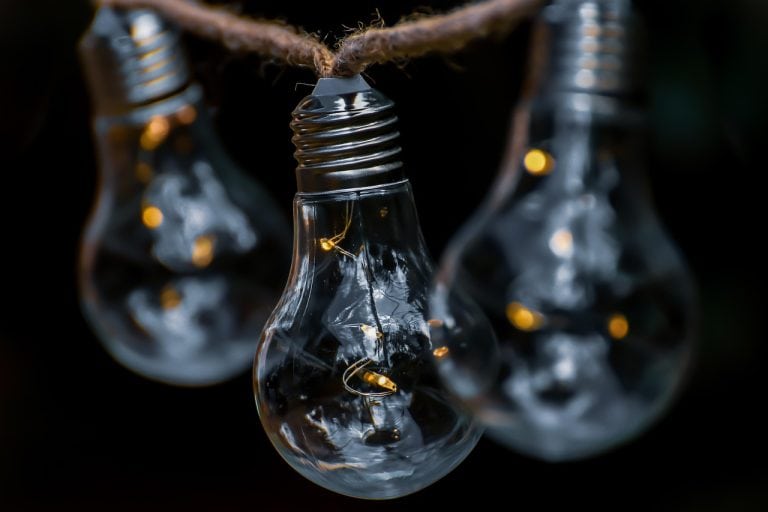Look, we’ve all been there. You’re scrolling through Pinterest at 2 AM, admiring those gorgeous pendant lights that cost more than your monthly grocery budget, wondering if you should just accept living in perpetual darkness or take out a second mortgage for “proper” lighting. Well, grab your tool belt and channel that inner Bob Vila, because DIY lighting is about to save both your wallet and your sanity.
I’ll be honest – when I first heard about DIY lighting projects, I was skeptical. The last time I attempted a “simple” home improvement project, I ended up with a crooked shelf that looked like it was installed during an earthquake. But here’s the thing: lighting projects are actually pretty forgiving, and the payoff is massive. Plus, there’s something deeply satisfying about flipping a switch and knowing you didn’t just illuminate your room – you conquered capitalism one LED bulb at a time.
Why DIY Lighting Makes Perfect Sense (Finally, Some Logic)
Let’s talk numbers for a hot minute. That trendy geometric pendant light you’ve been eyeing? It’s probably running you anywhere from $200 to $600. Meanwhile, you can create something equally stunning (and infinitely more conversation-worthy) for under $50. I’m not great at math, but even I can see those savings add up faster than my Netflix subscription charges.
But it’s not just about the money – though let’s be real, that’s a huge part of it. DIY lighting gives you complete control over your space’s vibe. Want industrial chic? Grab some copper pipes and Edison bulbs. Feeling bohemian? Mason jars and fairy lights are your new best friends. The beauty is in the customization, and honestly, it beats explaining to guests why you have the same pendant light as literally everyone else on Instagram.
Understanding What Makes Lighting Actually Work
Here’s where things get slightly technical, but stick with me – this isn’t rocket science, despite what some “experts” might have you believe. The secret to great DIY lighting isn’t just slapping a bulb in a random container and calling it a day (though I’ve definitely seen that approach on certain home improvement shows).
First up: bulb selection matters more than you think. Warm white LEDs (around 2700K-3000K) create that cozy, lived-in feeling, while cool white (4000K+) makes your space feel like a dentist’s office. Choose wisely, because nothing kills ambiance quite like surgical lighting in your dining room.
Next, consider diffusion. Direct light is harsh and unflattering – it’s the fluorescent office lighting of the home world. Frosted glass, fabric, or even strategically placed lampshades can transform glaring brightness into gentle illumination that actually makes you look good in selfies.
Creative DIY Lighting Ideas That Won’t End in Disaster

Upcycled Wine Bottle Pendant Lights
Before you roll your eyes, hear me out. Those empty wine bottles cluttering your recycling bin? They’re about to become your new favorite light fixtures. Cut the bottom off (safely – we’ll get to that), add some LED string lights, and suddenly you’ve got sophisticated pendant lighting that costs you basically nothing except the wine you were going to drink anyway.
Industrial Copper Pipe Floor Lamps
If you’re going for that “converted warehouse” aesthetic but your budget screams “converted studio apartment,” copper pipe lighting is your answer. A few trips to the hardware store, some basic plumbing skills (or YouTube tutorials), and you’ve got floor lamps that look like they belong in a $3,000/month loft.
Mason Jar Wall Sconces
Yes, I know mason jars are everywhere, but there’s a reason they’re popular – they work. Mount them on reclaimed wood, add some Edison bulbs, and boom: rustic charm that doesn’t scream “I shop exclusively at craft stores.” The trick is in the execution and not going overboard. One accent wall, not an entire mason jar museum.
Essential Tools and Materials (The Stuff You Actually Need)
Let’s be practical here. You don’t need a fully equipped workshop to create decent DIY lighting. Start with the basics: a good drill, wire strippers, electrical tape, and a healthy respect for electrical safety (seriously, turn off the power at the breaker – your hair will thank you).
For materials, hit up thrift stores, salvage yards, and even your own garage. That old colander gathering dust? Perfect pendant light housing. Those driftwood pieces from your beach vacation? Instant rustic chandelier material. The key is seeing potential in everyday objects, which is basically the entire philosophy behind successful DIY lighting projects.
Safety Considerations (Because Hospital Bills Aren’t DIY-Friendly)
I hate to be the fun police, but electrical work requires actual attention to safety protocols. Always turn off the power at the circuit breaker before starting any project. If you’re not comfortable with basic electrical work, hire a professional for the wiring and handle the aesthetic components yourself.
Check your local building codes too – some areas have specific requirements for electrical installations. It’s boring paperwork, but it’s better than explaining to your insurance company why your DIY chandelier started a small fire.
Styling Your Creations for Maximum Impact
The difference between “cute craft project” and “legitimate home decor” often comes down to styling and placement. Consider your room’s existing color palette and architectural features. That geometric pendant light you crafted needs proper height placement – too high and it disappears, too low and everyone’s bonking their heads.
Layer your lighting, too. One dramatic DIY fixture is great, but combining it with ambient lighting (table lamps, candles, even string lights) creates depth and warmth that single-source lighting just can’t achieve.
The Bottom Line on DIY Lighting Projects
Look, DIY lighting isn’t going to solve all your decorating problems, and you might end up with a few Pinterest fails along the way. But the combination of cost savings, creative satisfaction, and the ability to create truly unique pieces for your space makes it worth the occasional frustration.
Start small, be patient with yourself, and remember that even professional designers have projects that don’t turn out exactly as planned. The difference is they charge $200 an hour for their mistakes, while yours cost you a Saturday afternoon and maybe some choice words directed at inanimate objects.
Your home deserves DIY lighting that reflects your personality, not just what’s available at big box stores. So grab those wine bottles, dust off that drill, and start creating lighting that actually makes your space glow – both literally and figuratively.







